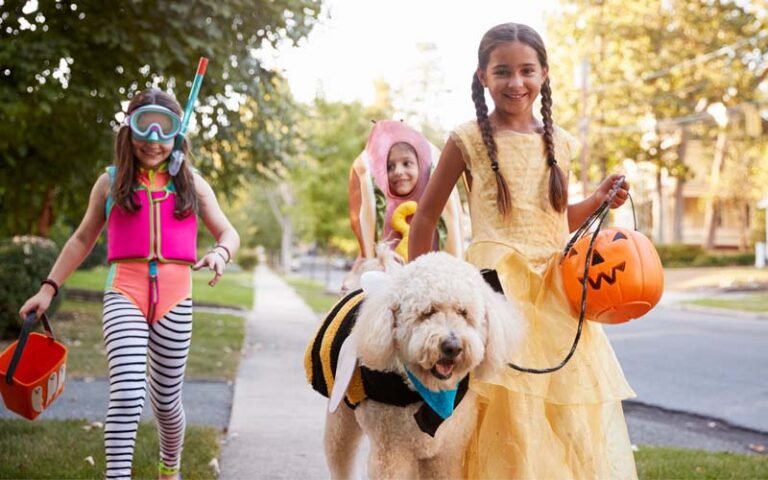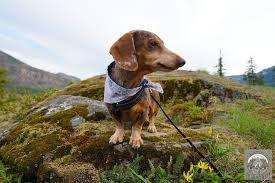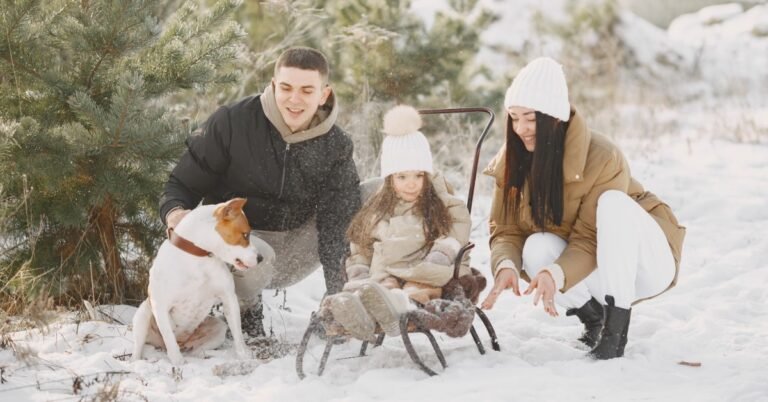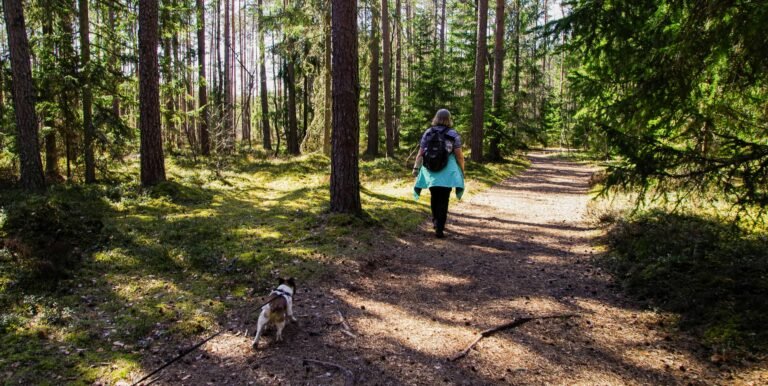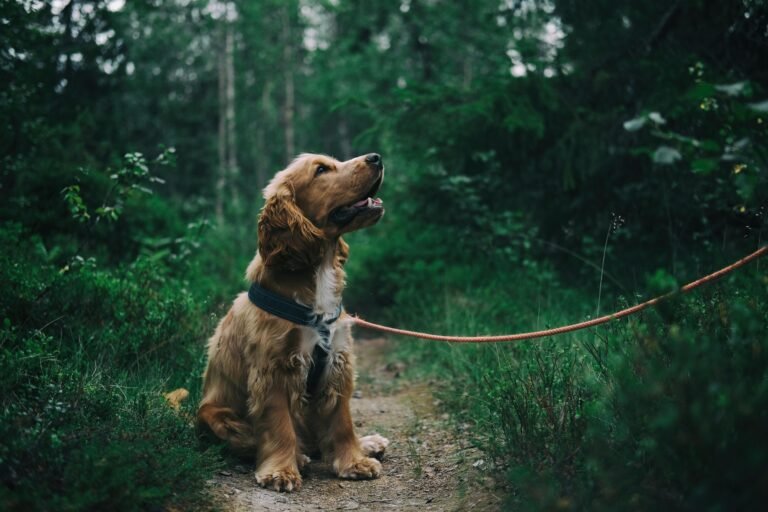This guide provides you with necessary tips for enjoying the winter wonderland alongside your furry friend while keeping safety a top priority. You’ll learn how to prepare for cold weather conditions, identify potential hazards, and engage in fun activities that ensure both you and your dog can thrive outdoors. From gear suggestions to ideal play areas, this post will help you create unforgettable snowy adventures that align with your dog’s well-being and your desire for fun. So bundle up, grab your pup, and get ready for a season of joy!
Types of Winter Activities for You and Your Dog
To explore the great outdoors in winter with your dog, consider engaging in various activities that benefit both you and your furry friend. Here are some popular choices:
| Snowshoeing | Trekking through snow with special footwear |
| Sledding | Enjoying exhilarating downhill rides |
| Winter Hiking | Exploring trails blanketed in snow |
| Igloo Building | Crafting snowy shelters for fun |
| Snowball Fetch | Playing fetch with snowballs |
Thou shall find that each activity presents a unique opportunity for adventure.
Snowshoeing
For a gentle yet invigorating experience, snowshoeing allows you to traverse snowy landscapes while your dog explores alongside you. This activity helps maintain fitness levels for both you and your pup, with the added benefit of deeper snow for extra cardio. Snowshoeing can be done on various terrains, making it a versatile winter activity.
Sledding
Sledding brings joy to both you and your dog as you race down snowy hills together. It’s not just about the speed; this bonding experience strengthens your connection as you share laughter and excitement.
Winter sledding can take various forms, including traditional sleds or even special dog-friendly sleds that allow your pup to join in the fun. Ensure you choose hills that are safe and free from obstacles, and watch your dog for signs of fatigue or overexcitement. With proper care, sledding can become a beloved winter tradition.
Winter Hiking
One of the most enjoyable winter activities is winter hiking, which allows you to immerse yourself in the serene beauty of a snowy landscape. Whether on marked trails or your unique path, hiking offers you and your dog a great way to exercise and explore nature.
It can be helpful to choose trails suited for winter hikes, where the scenery is stunning and the traffic is minimal. An early start can lead to quiet moments in the pristine snow, and you’ll be amazed by how much joy your dog finds in bounding through the white powder. Equip yourself with appropriate clothing and gear to ensure you both stay comfortable as you discover winter’s wonders together.
Essential Tips for Safe Winter Play
While enjoying snowy adventures with your dog, it’s vital to keep safety in mind. Here are some vital tips:
- Check the weather before heading out.
- Choose safe locations for play that are suitable for dogs.
- Regularly check your dog’s paws for ice or snow buildup.
- Keep play sessions short to prevent overexertion.
- Be aware of signs of discomfort or cold stress in your dog.
Thou must ensure both you and your furry friend have a safe, enjoyable experience.
Weather Considerations
Winter conditions can change rapidly, so it’s vital to assess the weather before you head outdoors. Make sure to monitor temperature extremes, wind chill factors, and the potential for snowfall that could affect visibility and terrain. This will help you determine the best conditions for a fun and safe outing with your dog.
Dog Safety Gear
If you plan to be outside for extended periods, consider using appropriate dog safety gear to keep your furry companion comfortable. Items like dog boots can protect their paws from ice, salt, and sharp objects, while a warm coat can help regulate their body temperature.
This gear not only enhances your dog’s comfort level but also helps prevent injuries. Ensure that the gear fits properly and is designed for active use so your dog can move freely and enjoy their playtime without restrictions.
Hydration and Nutrition
Considerations for hydration and nutrition become even more important in winter. Cold weather can lead to decreased water intake, so be sure to provide fresh water before and after playtime. Additionally, adjust your dog’s meals to account for the extra energy they may use while playing in the snow.
Nutrition plays a vital role in keeping your dog energized during winter activities. Opt for high-quality dog food and consider additional treats to help maintain their energy levels. Always consult with your veterinarian for tailored advice on proper nutrition that suits your dog’s active winter lifestyle.
Step-by-Step Preparation for Your Winter Outing
Despite the fun of a winter adventure, preparation is key to ensure you and your dog stay safe and comfortable. Here’s a guide to help you organize your outing effectively:
| Items to Pack | Purpose |
| Warm clothing for you | To stay comfortable in cold temperatures. |
| Sweater or coat for your dog | To keep your dog warm during the outing. |
| Water and bowl | To keep both you and your dog hydrated. |
| First aid kit | For addressing any injuries or emergencies. |
| Snacks for you and your dog | To provide energy during your adventure. |
Packing for the Adventure
The right gear can make all the difference on your winter outing. Ensure you have all the necessary items, from clothing to supplies for your dog, for a successful and enjoyable day in the snow.
Pre-Activity Warm-Up for Your Dog
Your dog needs a proper warm-up before engaging in physical activities. This can help prevent injuries and prepare them for the excitement ahead.
Adventure awaits, and your dog will benefit from a gentle warm-up routine to get their muscles ready. A few minutes of light play or brisk walking at home can boost circulation and help them ease into more rigorous activities once outside. Focus on stretching and light exercise to promote flexibility and reduce the risk of strain during your snowy adventures.
Post-Activity Care
With a successful day of winter play, it’s important to take care of your dog afterward to ensure their recovery and comfort.
Pre-activity care involves examining your dog for any signs of discomfort or injury post-adventure. Monitor their paws for snow or ice buildup and soothe any chapped skin with appropriate ointments. Also, offer them a warm spot to rest and plenty of water to rehydrate after exertion, ensuring they feel their best after an exciting day outdoors.
Factors to Consider Before Heading Out
Your safety and your dog’s well-being depend on several key factors before you launch on winter adventures. Consider the following:
- The current weather conditions
- Your dog’s breed and age
- Physical health and condition
- The terrain and location
Perceiving these factors helps ensure a fun and safe experience for both you and your pup.
Dog’s Breed and Age
Now, it’s crucial to consider your dog’s breed and age when planning winter outings. Different breeds have varying tolerances to cold weather, with some enjoying it more than others. Older dogs or puppies may also have less endurance, requiring special attention to their comfort and enjoyment.
Physical Condition and Health
You should assess your dog’s physical condition and health to determine their ability to handle winter play. Health issues, such as arthritis or heart conditions, may limit your dog’s mobility and endurance in cold weather.
Condition plays a significant role in your dog’s capacity to enjoy winter activities. Dogs with ideal body weight and good overall health can engage more fully in activities, whereas those with health concerns may tire quickly or risk injury. It’s wise to consult your veterinarian to understand your dog’s specific limitations before hitting the snow.
Terrain and Location
Before venturing out, also assess the terrain and location you plan to explore. Different surfaces, such as icy trails versus fresh snow, can impact your dog’s traction and stability.
Factors such as elevation, trail conditions, and even the presence of other animals can influence your adventure. Select areas that are safe and manageable for your dog, avoiding steep hills or areas where snow has created hazardous conditions. Choosing suitable terrain contributes to a positive experience and keeps your dog safe during your winter outings.
Pros and Cons of Winter Activities with Dogs
After deciding to engage in winter activities with your dog, you should weigh the pros and cons. Understanding both sides will help you prepare for a safe and enjoyable experience in the snow.
| Pros | Cons |
|---|---|
| Improved physical health | Risk of frostbite |
| Enhanced bonding time | Slips and falls for both of you |
| Positive mental stimulation | Increased weariness or exhaustion |
| Socialization opportunities | Hypothermia risk |
| Adventure and fun | Paw irritation from salt or ice |
Benefits of Cold Weather Play
The cold weather can actually provide numerous benefits for you and your dog. Engaging in winter activities encourages physical exertion, helping maintain your dog’s weight and overall health. Plus, the chilly environment often revitalizes spirits, making outdoor play exciting. You’ll also create lasting memories with your pet, deepening your bond with every snowy stroll or playful snowball chase.
Potential Risks and Challenges
Cons of winter play include several risks that must be taken seriously. Your dog’s risk of injury and discomfort can increase due to cold temperatures. Additionally, certain breeds are more susceptible to weather-related conditions, so knowing your dog’s limitations is crucial.
Benefits of participating in winter activities with your dog include improved cardiovascular health and reduced stress levels for both of you. However, you should be aware that the snowy landscape can pose hazards. Ice can cause slips and falls, while extreme cold may lead to hypothermia or frostbite for pets without adequate protection. It’s also important to monitor for paw irritation from de-icing salts, which can be harmful. Understanding these potential challenges allows you to take proactive steps to ensure a safe and enjoyable winter experience together.
Tips for Training Your Dog for Winter Fun
Keep your dog comfortable and safe during winter play by focusing on training that enhances their enjoyment of the snowy season. Here are some effective tips:
- Start with short sessions to build comfort with winter conditions.
- Use positive reinforcement for desirable behaviors.
- Socialize your dog with other friendly pets and people.
- Practice recalls in snowy environments to strengthen commands.
Perceiving the challenges of winter is imperative for preparing your dog for a joyful outdoor experience.
Building Endurance
Winter activities can be physically demanding for your dog, so gradually building their endurance is key. Incorporate short walks and play sessions, gradually increasing their length as your dog adapts to the colder temperatures and snow. This not only improves their fitness but also acclimates them to winter weather.
Teaching Commands for Safety
If you want to ensure a safe winter adventure, teaching your dog imperative commands is a fundamental step. Commands like “come,” “stay,” and “leave it” can help maintain control in bustling snowy environments, especially when distractions abound.
It is imperative to practice these commands in different scenarios, including snowy situations to reinforce their reliability. Use treats and positive reinforcement to encourage your dog when they respond correctly. Repetition will build their confidence and reliability, ensuring you both have a delightful and safe winter outing together.
Conclusion
As a reminder, ensuring safe winter play with your dog means being well-prepared and informed. Equip yourself with the right gear, be mindful of your dog’s physical limits, and take steps to protect their paws from harsh conditions. This season can be filled with wonderful adventures, provided you prioritize safety for both you and your furry friend. Embrace the joy of snowy days while following best practices for a fun and secure experience outdoors.

